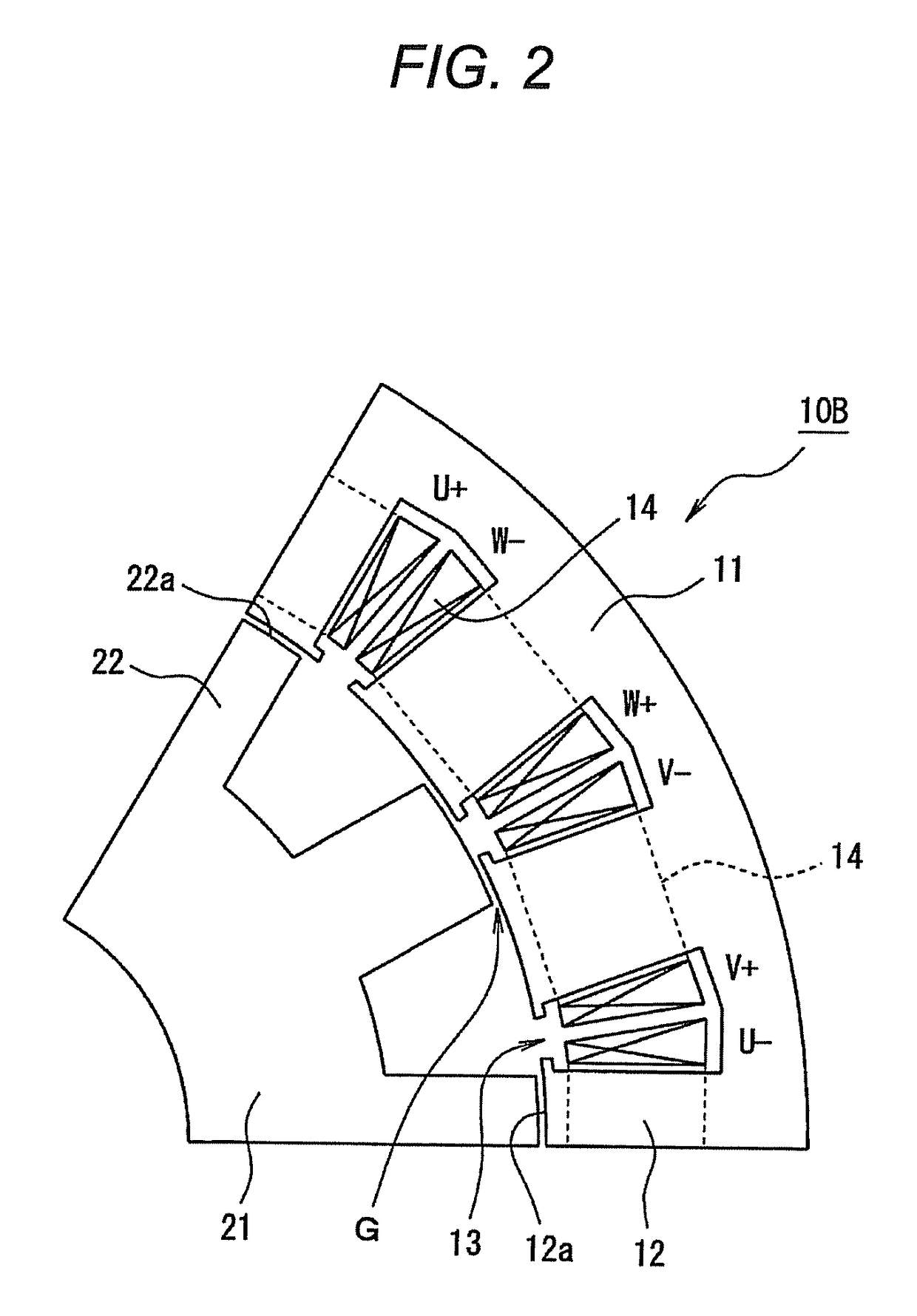Reluctance motor having inductor pole coils located between adjacent ones of the salient poles of a rotor
a technology of inductor pole coils and rotors, which is applied in the direction of synchronous motors, magnetic circuit rotating parts, magnetic circuit shapes/forms/construction, etc., can solve the problems of reducing the efficiency of induced current generation, etc., to achieve the effect of improving torque and high efficiency
- Summary
- Abstract
- Description
- Claims
- Application Information
AI Technical Summary
Benefits of technology
Problems solved by technology
Method used
Image
Examples
Embodiment Construction
[0062]An embodiment of the invention will be described in detail below with reference to the drawings. FIGS. 1 to 21 are views for explaining an embodiment of a reluctance motor according to the invention. FIGS. 1 to 3 are radially sectional views of reluctance motors, each of which is depicted correspondingly to a mechanical angle of 60° around the axis thereof. The reluctance motor is manufactured to have a structure in which the depicted part corresponding to the mechanical angle of 60° is repeated periodically circumferentially.
[0063]In FIG. 1, a reluctance motor 10 starts at a reluctance motor 10B having a basic structure shown in FIG. 2 and uses a structure in which the problem inherent in a reluctance motor 10D shown in FIG. 3 and developed from the reluctance motor 10B can be solved. For example, the reluctance motor 10 has suitable performance when it is mounted as a drive source similar to an internal combustion engine on a vehicle or inside a wheel in a hybrid car or an e...
PUM
 Login to View More
Login to View More Abstract
Description
Claims
Application Information
 Login to View More
Login to View More - R&D
- Intellectual Property
- Life Sciences
- Materials
- Tech Scout
- Unparalleled Data Quality
- Higher Quality Content
- 60% Fewer Hallucinations
Browse by: Latest US Patents, China's latest patents, Technical Efficacy Thesaurus, Application Domain, Technology Topic, Popular Technical Reports.
© 2025 PatSnap. All rights reserved.Legal|Privacy policy|Modern Slavery Act Transparency Statement|Sitemap|About US| Contact US: help@patsnap.com



